
Trakkabeam A800 Helicopter Searchlight Reliability and Performance from the Inside Out

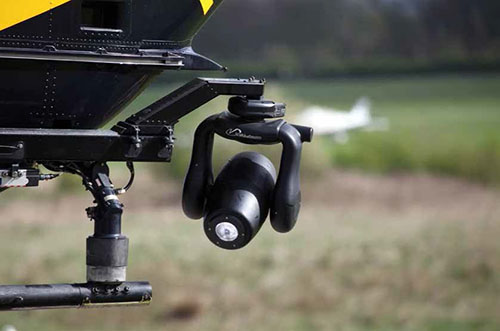
With your first look at a Trakkabeam A800 helicopter searchlight, you’ll notice that this isn’t your grandfather’s searchlight. Slim, sleek and aerodynamic are the adjectives that come to mind. How can something this small produce so much light, move quickly and smoothly, color our world with internal filters AND not only meet the latest DO-160 standards, but actually be OEM certified? Read on.
The answer comes when we see the technical innovations the engineers at Trakka Corp have employed into the A800 system. First we will see the searchlight and gimbal pivots smoothly and quickly +/- 180 degrees azimuth and +35 to -110 degrees in elevation, which means operators can point the light in any direction around the aircraft. The searchlight is powered by the power conditioning interface unit (PCIU). This unit is where aircraft power (28 vDC) enters and is regulated to supply a steady, clean voltage to the searchlight. The typical total operating current is only 40 amps. In addition, the PCIU is the brains of the system by interfacing to the grip controller and/or pilot controller and performs the slaving interface to camera/moving map systems.
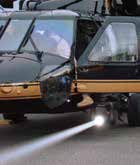
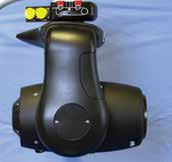
The Trakkabeam A800 airborne high intensity searchlight (Figure 1) represents the latest in design and development for this type of system, and may be mounted to the helicopter’s external structure at any suitable position to meet operator requirements. Inspection and maintenance procedures are minor and widely spaced resulting in a low cost of ownership.
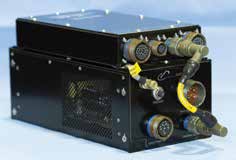

The Trakkabeam A800 searchlight system includes a PCIU MKII (Figure 2) and grip hand controller (Figure 2). Optional components include the control interface unit (CIU) MKII (Figure 3) used for annunciating system status and providing discrete inputs to control the searchlight, or the pilot/co-pilot control (Figure 3) which maybe fitted in the cockpit and provides full searchlight control, indication and discrete inputs.
To ensure trouble-free operation and optimal performance, a maintenance plan is provided in the maintenance manual documentation to outline scheduled servicing intervals. Only simple maintenance is required and this can be performed by the operator. Enhanced 24-month maintenance can also be performed by the operator if they elect to take the optional training package provided by Trakka Corp.
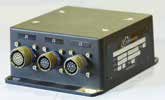
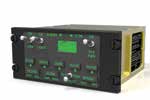
100-hour or two-month
This only requires the operator to perform a full power up self-test that identifies any problems or restrictions in the elevation or azimuth gearbox assemblies.
600-hour or six-month
Perform the test described above together with a general inspection for damage, wear and structural issues. Can be performed by the operator.
1,200-hour or 24-month
Includes the 600-hour inspection but provides further inspection/lubricating of gearboxes and filter/zoom mechanisms. This includes further cleaning of the optic elements if required. This is to be performed by a Trakka Corp Authorized Service Center. If the operator takes the optional training package, then the A800 components have no requirement to be returned to the service center.
10,000-hour
This service will require that the unit is returned to a Trakka Corp Authorized Service Center
White Light Edge to Edge
The Trakka Corp searchlight employs a simple but sophisticated sequence of lenses that compress and focus nearly 100 percent of the light generated by the bulb into a beam that is bright white from edge to edge. Whether it’s in narrow or wide focus, the light stays uniform from edge to edge. No operator will ever see a “black hole” with the Trakkabeam.
Simple maintenance and care ensures the light quality is maintained.
1. Although there are no limitations to the useful life of the lenses in the optical system, regular cleaning in dusty and salty environments will ensure a clear white edge-to-edge image. An excessive build up of dust may cause a reduction in brightness and reduce the effectiveness of the lens. Cleaning procedures are detailed in the maintenance manuals and use common commercially available cleaners, or compressed air as an alternative.
2. Lamp focus affects beam image. Over time or when fitting a new lamp, a focus adjustment might be required. Focus adjustment procedures are provided in detail in the maintenance manuals and require no special tools or materials.

Light on Target — Not Heat or Scatter
It’s the quantity of “quality light” put on the target that makes the searchlight effective. Other searchlight technologies employ a parabolic dome that requires a very large bulb (1,600 watt) to make up for the losses of 1) light absorbed inside the searchlight that’s turned into heat and 2) “light scatter,” which is the light that is outside the intended beam.
The Trakkabeam generates an equally effective beam of light using a smaller bulb (800 watts) by efficiently transforming more than 90 percent of the bulb energy into the beam. The case runs so coolly that you can put your hand on it even after an hour of operation!
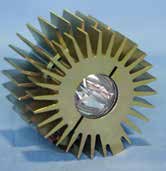
It’s the combination of a physically smaller lamp (less susceptible to vibration effects) and innovative heat sinking and airflow design techniques that make the A800 bulb so reliable. There is really only one maintenance function that will help ensure the long life (1,000 hours) of the system.
Verify the intake openings in the searchlight cowling are free of debris and that the lamp fan runs for two minutes after the lamp is extinguished. The fan turning off is automatic and does not require operator input.
Internal Filter Wheel
The internal filter wheel is unique to the A800. Up to five filters can be installed that perform functions no other searchlight can do. However, most operators use three filters: IR820 for use with NVG goggles, amber for cutting through smoke/fog/mist/snow/rain, and red, which is used during hoist operations to provide non-glare light safely during hoist operations.
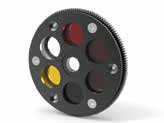
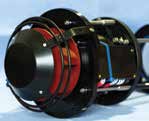
Because the filter wheel is internal to the searchlight, there are no aircraft flight restrictions to change filters. At the push of a button on the controller, the wheel will turn and select the next filter in about one second.
Colored or IR filters should be checked and cleaned in extremely dusty or salty environments. Cleaning should be performed only with low pressure compressed air. Excessive dust or salt build up on the filters can cause damage due to overheating. Filters are fitted to an easily removable filter wheel for inspection and cleaning.
Slaving Accuracy and Stability
Many operators desire the searchlight to work in conjunction with a camera and moving map systems through a function called slaving. In order for the light to function properly, its motors must move at a rate that meets or exceeds the camera rate and its positioning information must be reported back to the controller accurately. In the Trakkabeam system, the controller is contained within the PCIU so no extra slaving LRU is required.
Under normal circumstances, slaving accuracy or speed (60 degrees per second) should remain at factory specifications. However, regular maintenance will identify any potential issues due to sand and dust contamination or excessive vibration and hard landings
1. Sand, dust or salt build up in the elevation or azimuth hard-stop assemblies during harsh conditions can reduce or slow the slewing ability. Inspection and cleaning, as described in the maintenance manuals, will result in full normal operation.
2. A backlash test is performed during the 24-month service. This test identifies excessive play that may result from excessive vibration or shock. The azimuth and elevation gearboxes can be adjusted and tightened.


While the Trakkabeam A800 helicopter searchlight uses advanced optical technology and its performance exceeds the requirements of today’s complex helicopter missions, it still turns out that its maintenance functions remain similar to the past — keep it clean.
The simple maintenance and cleaning activities described will ensure you have low maintenance cost, the tight beam of bright light and high performance slaving ability you expect from the Trakkabeam A800 helicopter searchlight.
 Scott Hovelsrud has been in the aviation industry for 27 years. After graduating from North Dakota State University with a master’s degree in electrical engineering, Scott had a short stint as “assistant chief mad scientist” for EF Johnson Company in Waseca, MN. When his wife said she was moving to Arizona and that he could go with her, Hovelsrud went to work for Wulfsberg Electronics (now Cobham) in Prescott, AZ, and was part of the design team that created the RT-5000 multiband AM/FM transceiver. Over the next 25 years, he worked his way into a product line director position and was responsible for all things radio at Wulfsberg. Hovelsrud joined the Trakka searchlight team in 2012 and works out of his home in Prescott.
Scott Hovelsrud has been in the aviation industry for 27 years. After graduating from North Dakota State University with a master’s degree in electrical engineering, Scott had a short stint as “assistant chief mad scientist” for EF Johnson Company in Waseca, MN. When his wife said she was moving to Arizona and that he could go with her, Hovelsrud went to work for Wulfsberg Electronics (now Cobham) in Prescott, AZ, and was part of the design team that created the RT-5000 multiband AM/FM transceiver. Over the next 25 years, he worked his way into a product line director position and was responsible for all things radio at Wulfsberg. Hovelsrud joined the Trakka searchlight team in 2012 and works out of his home in Prescott.
